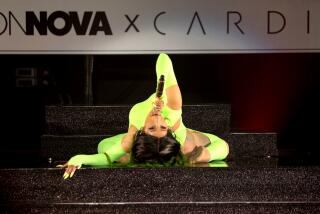THE STYLE FILES: THE PLAYERS : The People Who Never Make Headlines : The Landlord : DONALD TRONSTEIN, Rodeo Drive rent collector: “Back in the ‘70s, you could borrow money from banks with ideas.”
- Share via
Donald Tronstein collects rent from some of the biggest names in fashion. Giorgio Armani, Fred Joaillier, Bruno Magli and Polo / Ralph Lauren occupy his various Rodeo Drive properties.
But he flinches at being called one of the most powerful landlords in Beverly Hills. “There are larger developers here,” he says.
Few, however, have had Tronstein’s impact. The son of a fur manufacturer, Tronstein has been a lightning rod on Rodeo almost from the start.
“Back in the ‘70s, you could borrow money from banks with ideas,” he says. That’s how, in 1976, he acquired the funds to turn an empty gas station on the corner of Rodeo and Brighton Way into the future site of Fred Joaillier jewelers.
“I had been a salesman, then a manager at Coldwell Banker when it was located in the Beverly Hilton hotel,” he says. Tronstein helped arrange the sale of what was then Elizabeth Arden to Neiman Marcus, “so I knew they had to move and were looking for a sight.” He persuaded Arden, and later Gump’s, to take up residence in his newly opened building.
Then the recession hit, causing both leases to crumble. Fortunately for Tronstein, Fred Joaillier came along a few months later.
In the interim, he could have gone broke. But Tronstein hung on to what was then the most expensive retail space on the block. “We were asking $4 a square foot, which was unheard of at the time,” he says. After Fred took up residence, it wasn’t difficult to sway Vidal Sassoon and Bally shoes. The profits bought Tronstein a second Rodeo property, which now houses Frette linens, Bruno Magli and the Custom Shirt shop.
Tronstein’s latest challenge is persuading the world that the influx of moderately priced stores like Guess, Cole-Haan, Bernini Sport and Benetton enhance rather than hinder the street’s cache. Not only do such venues “humanize” and “localize” the street, he says, but they attract diverse shoppers. Rodeo Drive is now the third-largest tourist attraction in the state, behind Disneyland and Universal Studios.
“I think mixing the entertainment factor, such as the Guess tepees for dressing rooms, with the elegance and style of the couture shops is a very powerful combination,” says Tronstein. “It’s what retail is about in the 1990s.”






